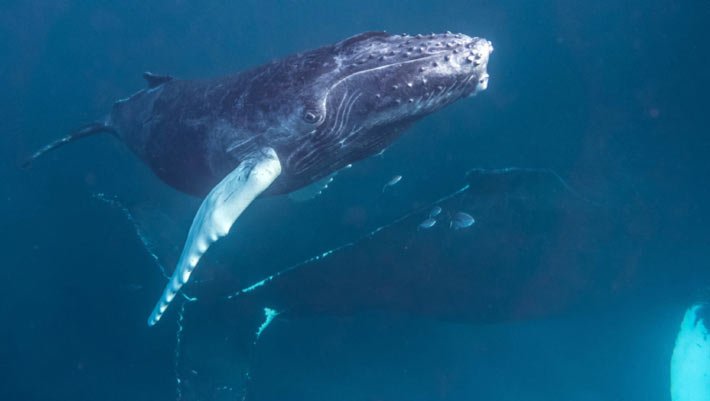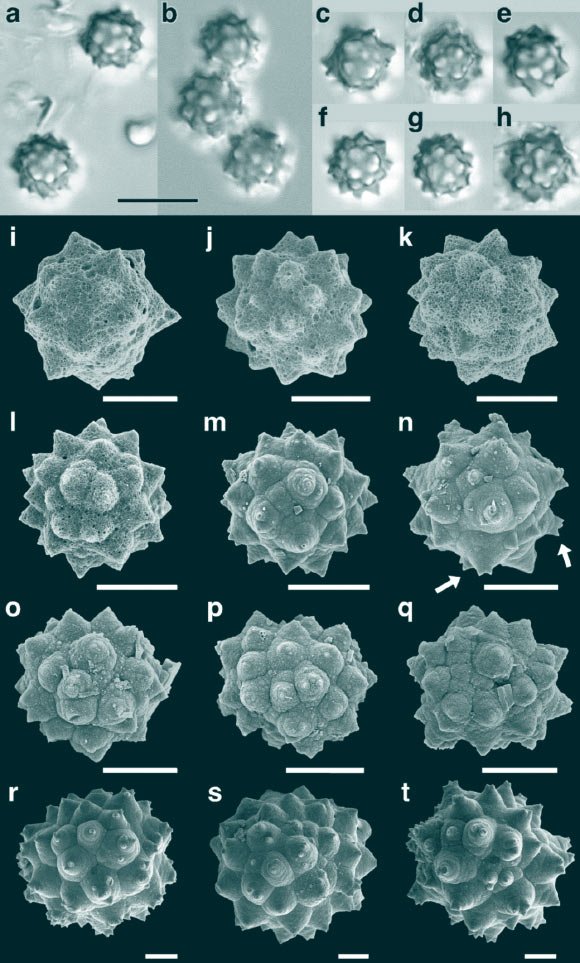An international team of researchers has analyzed the groans, moans, whistles, barks, shrieks and squeaks in humpback whale song recordings collected over eight years in New Caledonia.

Arnon et al. uncovered the same statistical structure in humpback whale (Megaptera novaeangliae) song that is a hallmark of human language. Image credit: Christopher Michel / CC BY 2.0.
“We found something truly fascinating. Their noises and our words share a common pattern,” said Dr. Emma Carroll, a marine biologist at the University of Auckland.
In the study, Dr. Carroll and colleagues applied quantitative methods typically used to evaluate infant speech and found that the culturally evolved learnability of human languages also applies to songs of humpback whales (Megaptera novaeangliae).
In human language, structurally coherent units exhibit a frequency distribution that follows a power law, also known as a Zipfian distribution — an attribute that facilitates learning and likely enhances the accurate preservation of language across generations.
Humpback whale song presents a compelling parallel to human language, as it is one of the most intricate vocal displays in the animal kingdom and is also passed down through cultural transmission.
These songs are highly structured, consisting of nested hierarchical components — sound elements forming phrases, phrases repeating into themes, and themes combining into songs.
If the statistical properties of human language arise from cultural transmission, similar patterns should be detectable in whale song.
The study authors used infant-inspired speech segmentation techniques to analyze 8 years of recorded humpback whale song data.
They discovered hidden structures within whale songs that exhibit striking parallels to human language.
Specifically, these songs contain statistically coherent subsequences that conform to Zipfian distribution.
Moreover, the lengths of these subsequences adhere to Zipf’s law of brevity, an efficiency-driven principle found in numerous species, including humans.
This striking parallel between two evolutionarily distant species underscores the profound role of learning and cultural transmission in shaping communication across species, challenging the notion that such structural properties are exclusive to human language.
“Humpback whale song is culturally transmitted on a geographic scale not seen outside of humans, yet they are evolutionarily quite distinct from us,” said Dr. Jenny Allen, a leading expert in whale song structure from Griffith University.
“This is why it provides such an exciting comparison.”
“These results give us unique insight into the importance of cultural transmission in learning processes across species, particularly for learning complex systems of communication.”
“Rather than trying to fit animal communication into a ‘human language’ shaped hole, I think the more interesting question is Why did such different communication systems evolve such similarities?”
“Using insights and methods from how babies learn language allowed us to discover previously undetected structure in whale song,” said Hebrew University’s Professor Inbal Arnon.
“This work shows how learning and cultural transmission can shape the structure of communication systems: we may find similar statistical structure wherever complex sequential behavior is transmitted culturally.”
“It raises the intriguing possibility that humpback whales, like human babies, may learn their song by tracking transitional probabilities between sound elements, and using dips in those probabilities as a cue to segment the song.”
The study was published today in the journal Science.
_____
Inbal Arnon et al. 2025. Whale song shows language-like statistical structure. Science 387 (6734): 649-653; doi: 10.1126/science.adq7055











